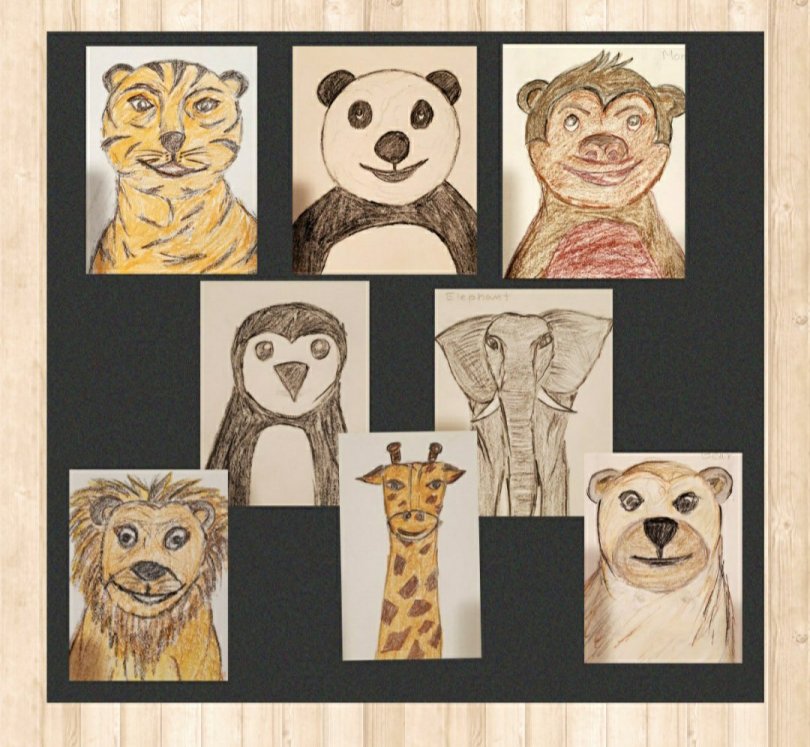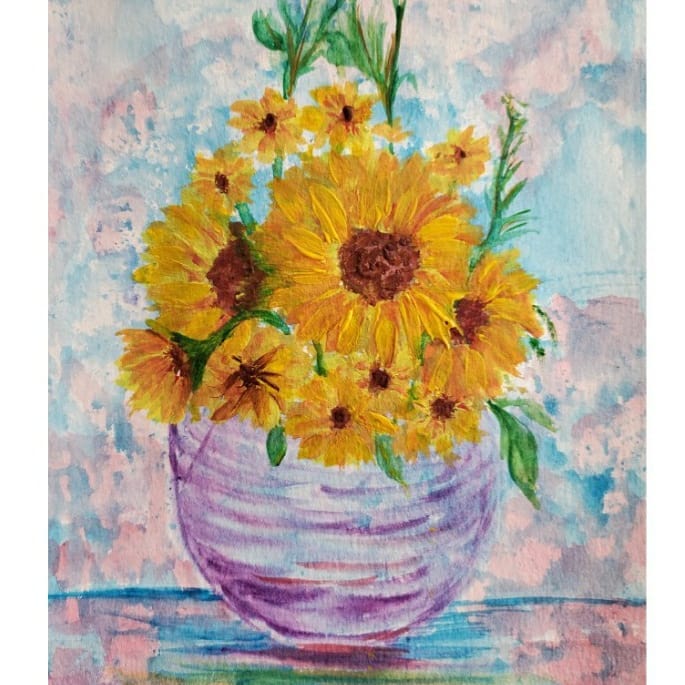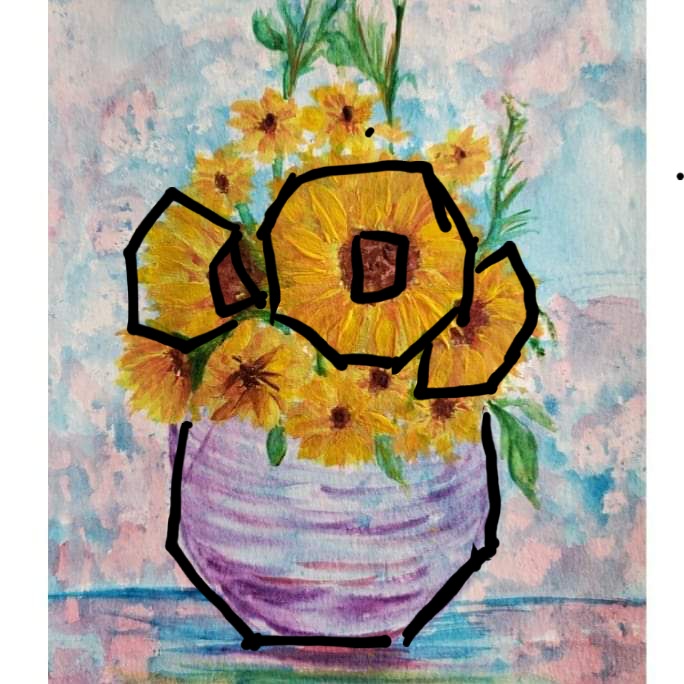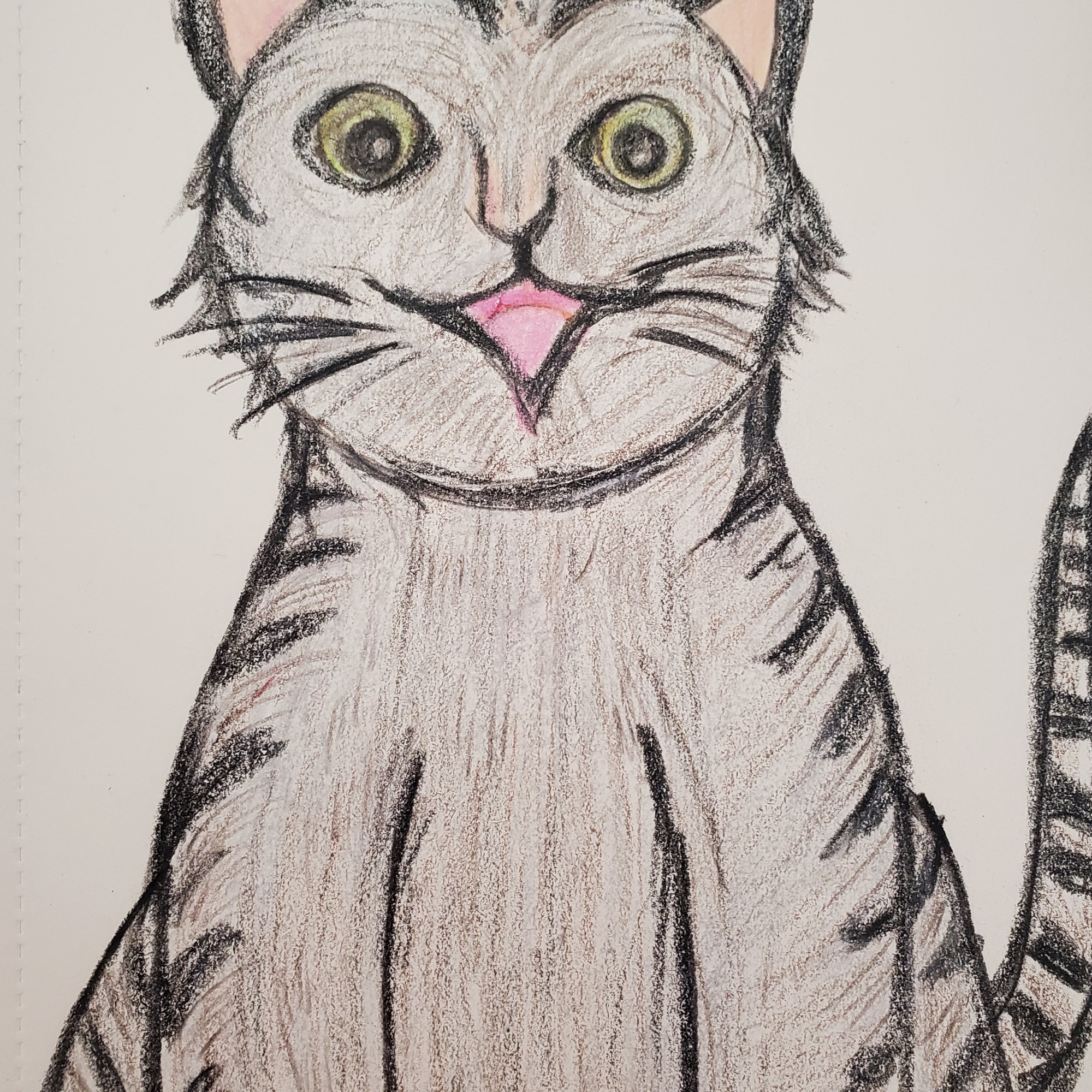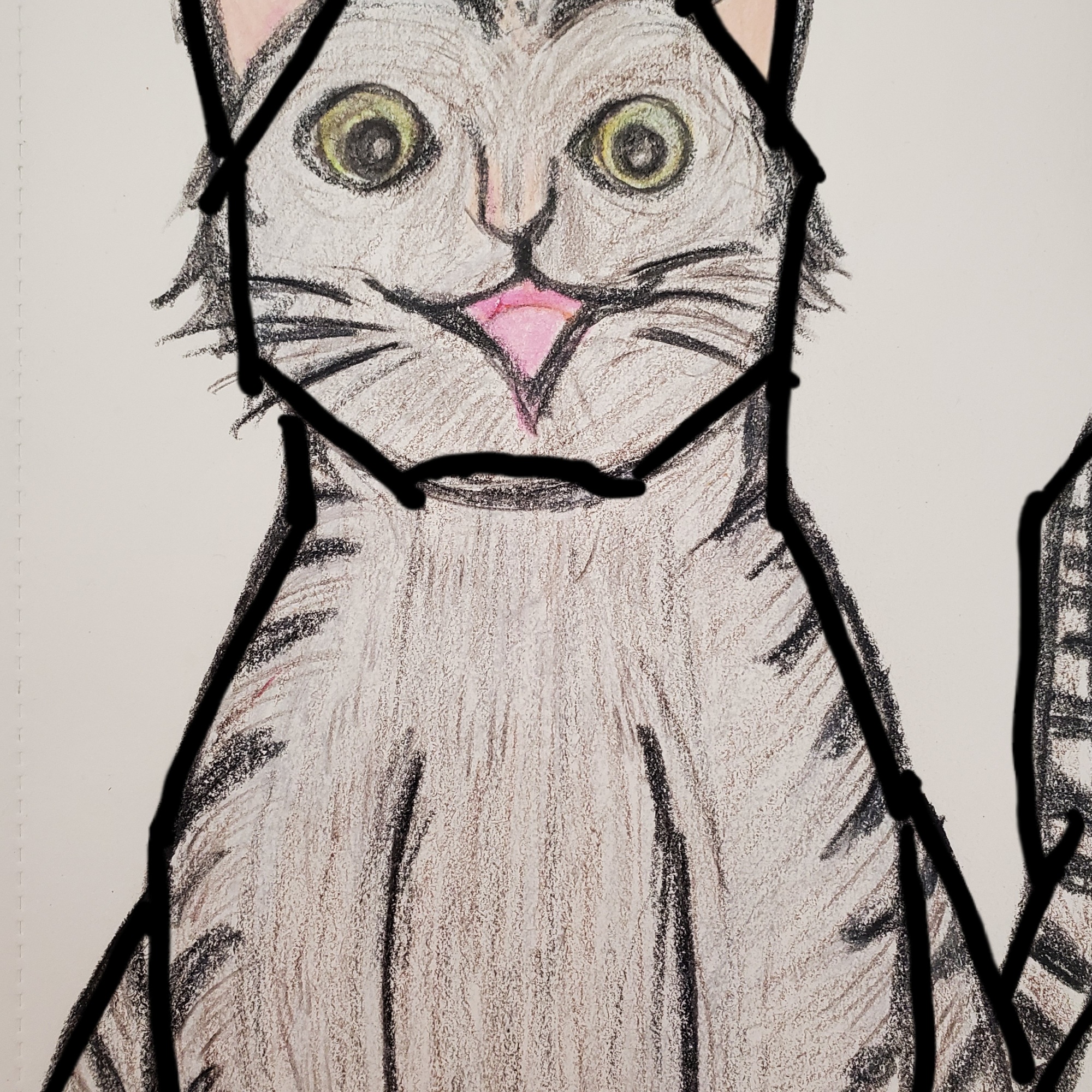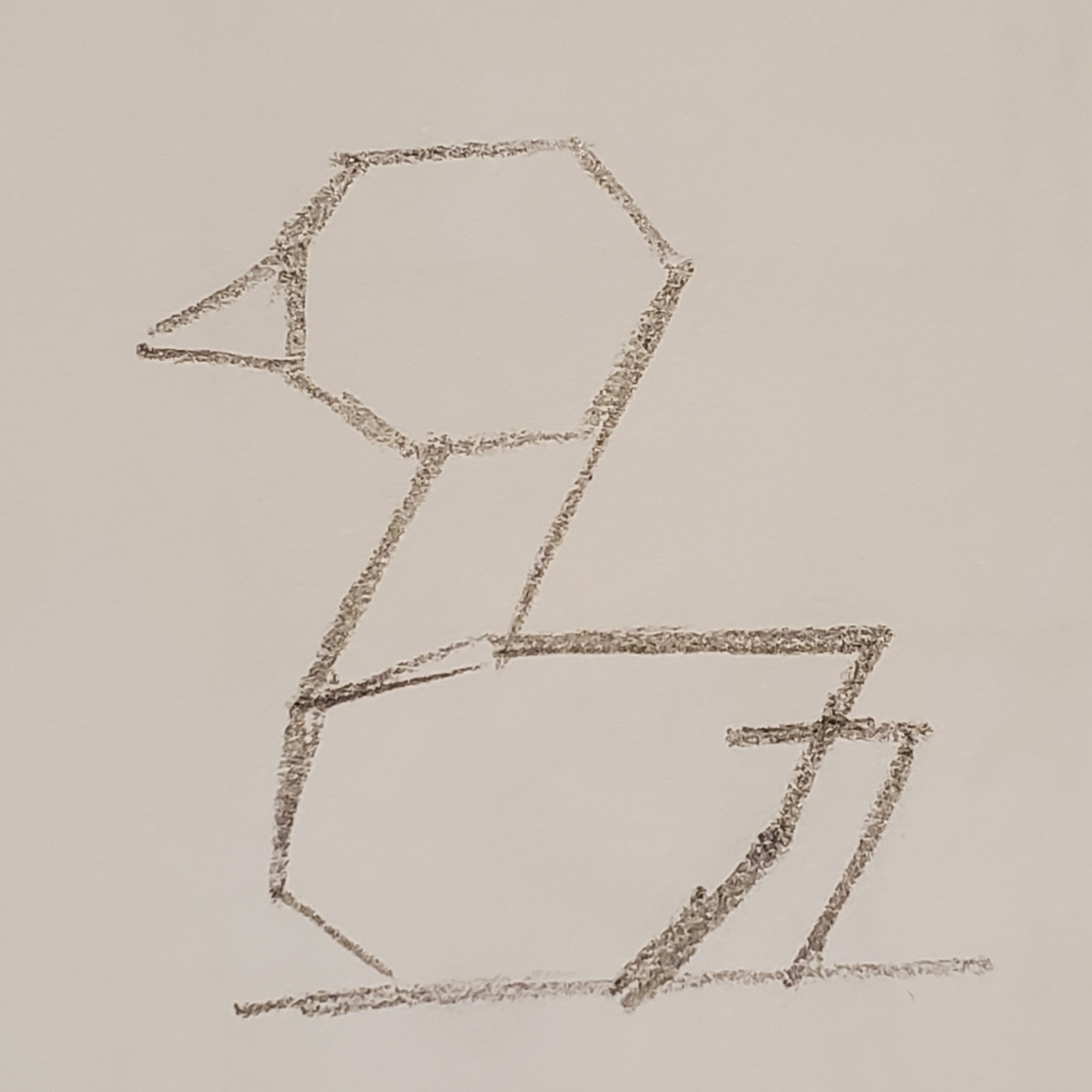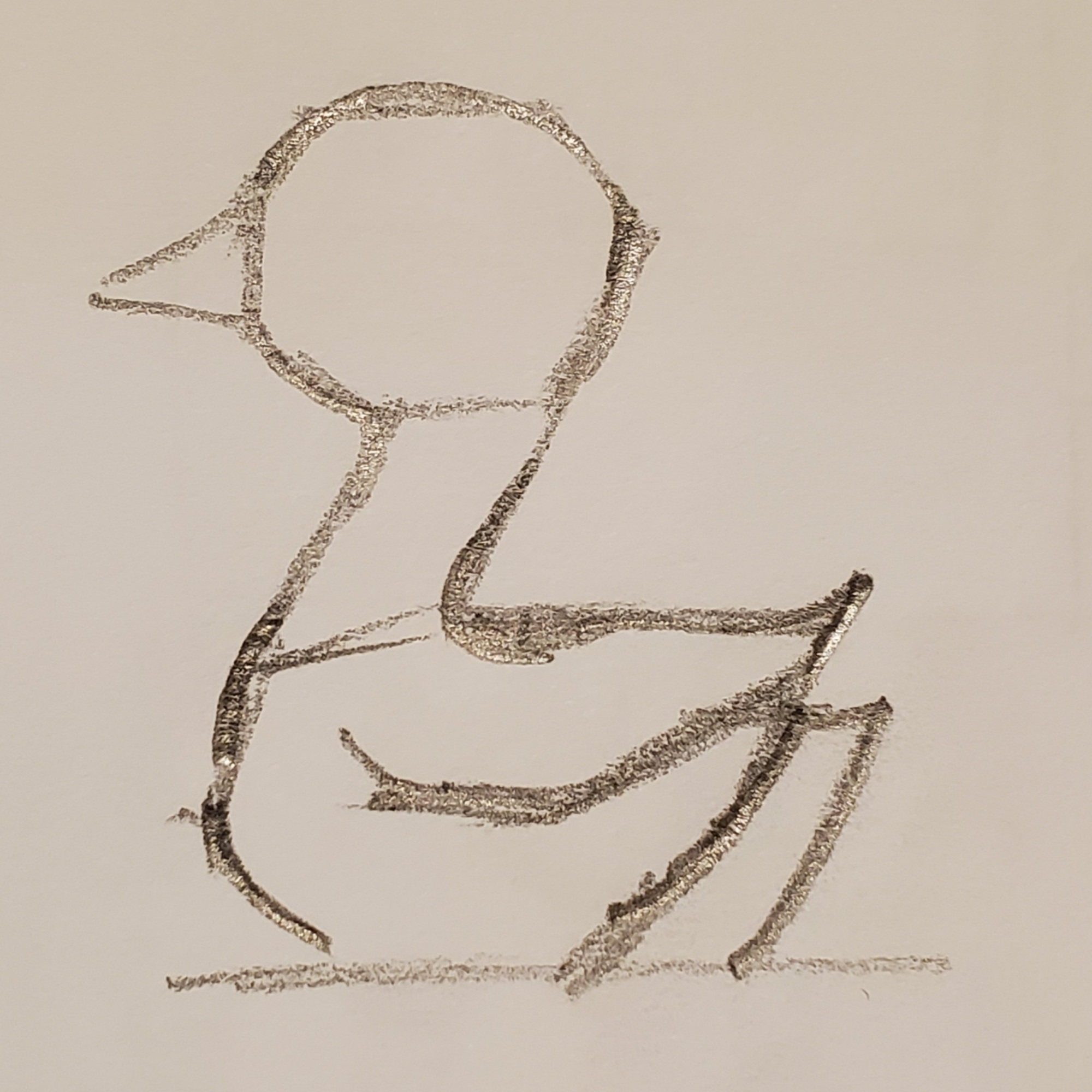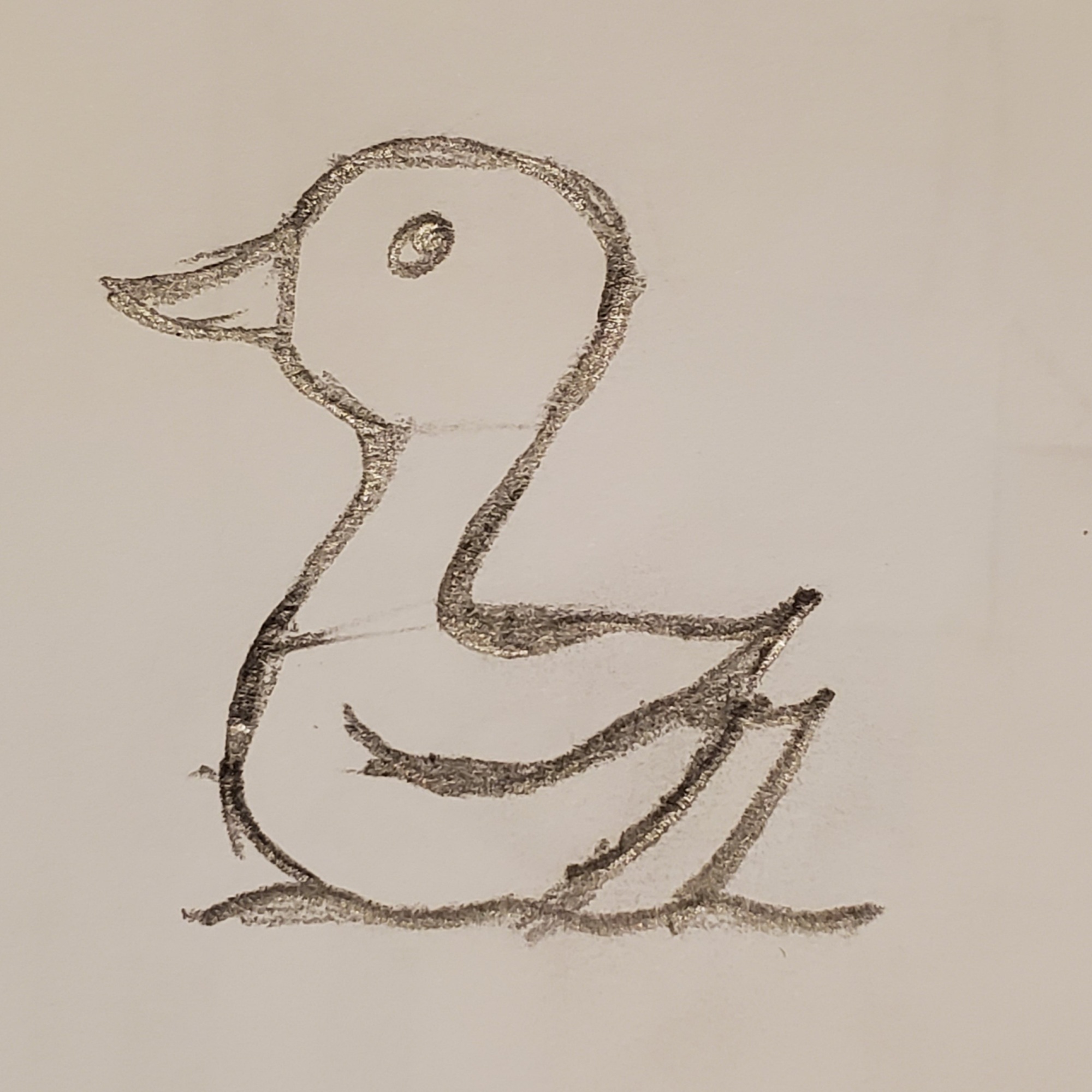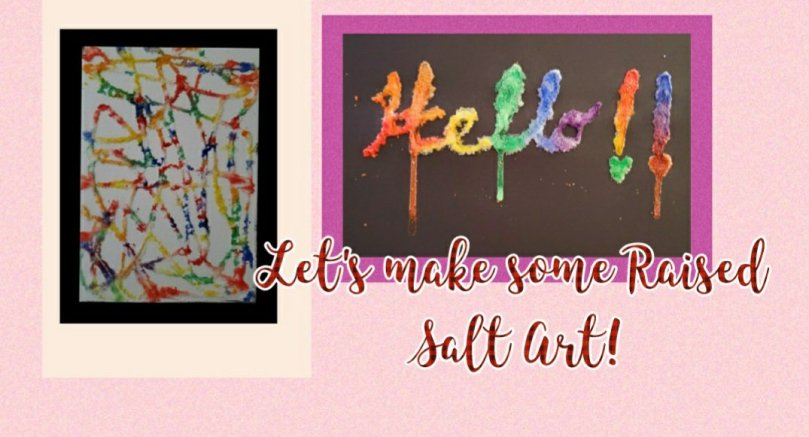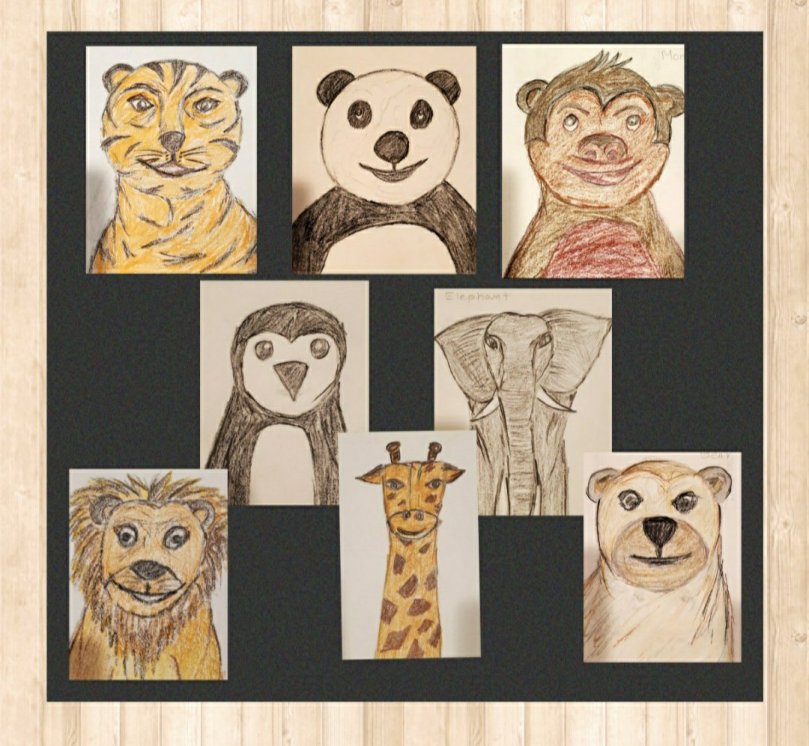
The first thing that comes to our mind when we say Safari is probably the African Safari!Going to the Zoo is something all kids love!But Safari is a total different experience, where you get to watch these beautiful animals in their natural habitat!
My little ones always tell me all the fun facts that they have learnt or read somewhere about ! To be honest, they know more about them than me! It always has me impressed that they can retain so much information from what they read or have watched on some videos! I guess you remember more if you are learning about them just for fun rather than for a taking a test!
So this week we decided to learn to draw some Animals Portraits that we like to watch in a Zoo or on the Safari! We concentrated on drawing the portraits with Focus on their Facial Features. We can also do the same thing with favorite pets!
The first 4 animals that we are going to draw are a PANDA,TIGER, BEAR and a MONKEY! For these four animals, we will start with circle for the faces.
Follow the directions step-by-step to draw the animals!
STEP1: Start with 4 Circles
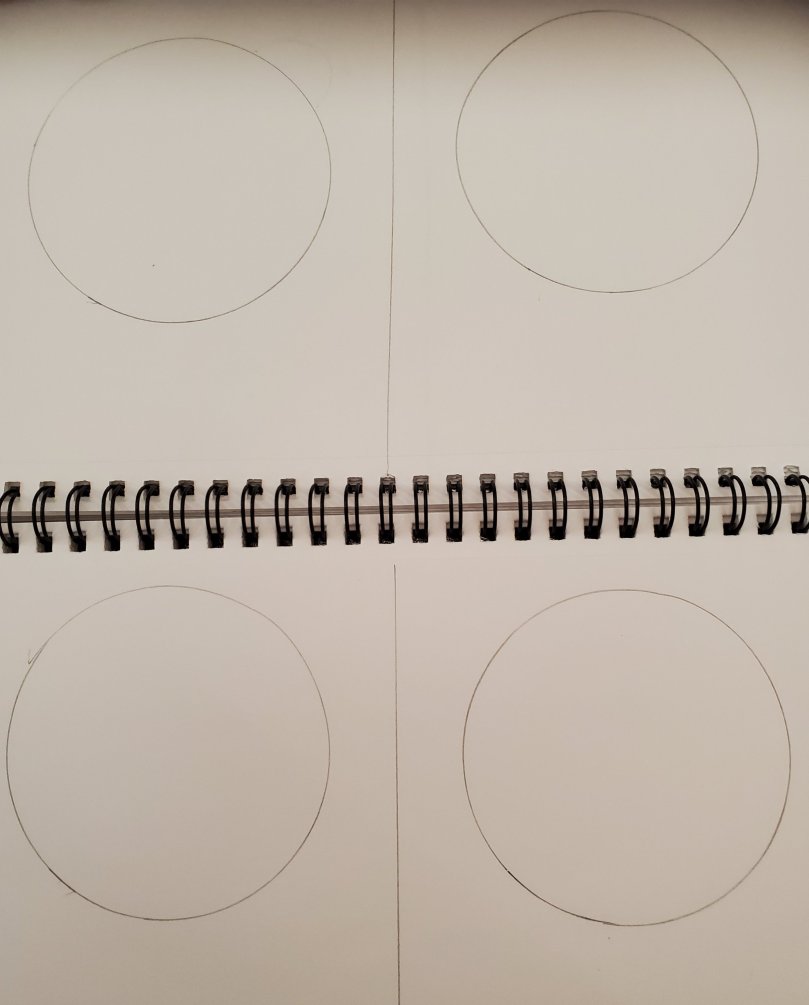
STEP 2: Make your ears for all the four animals
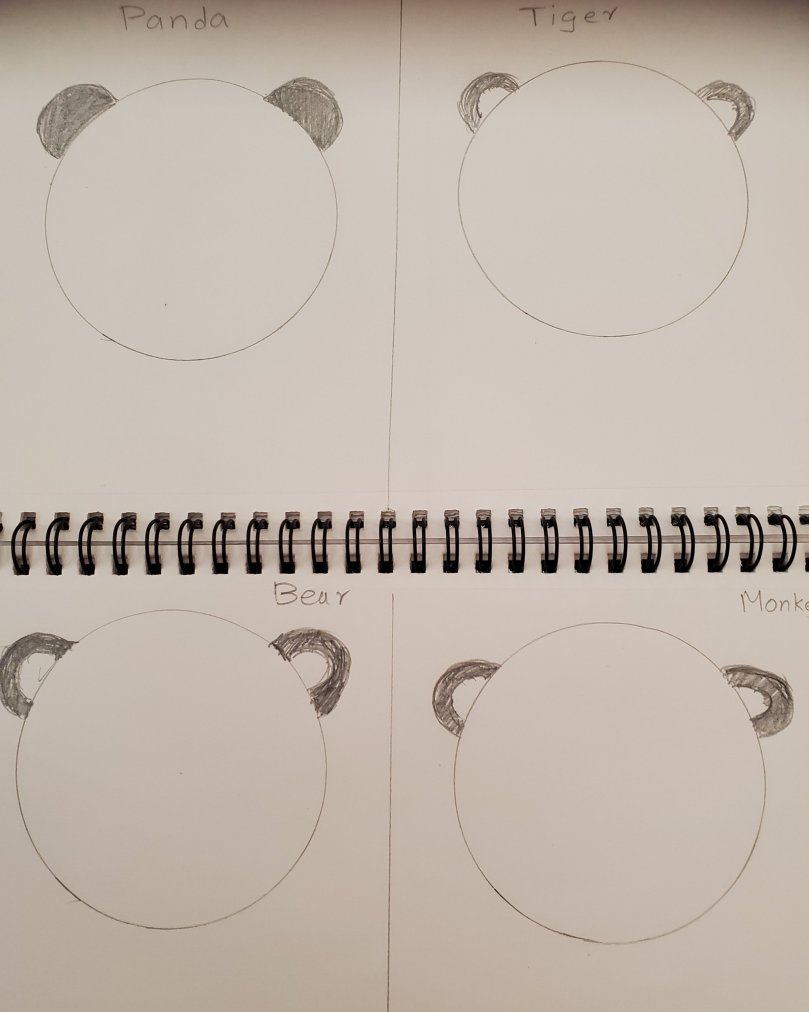
STEP 3: Draw the eyes.
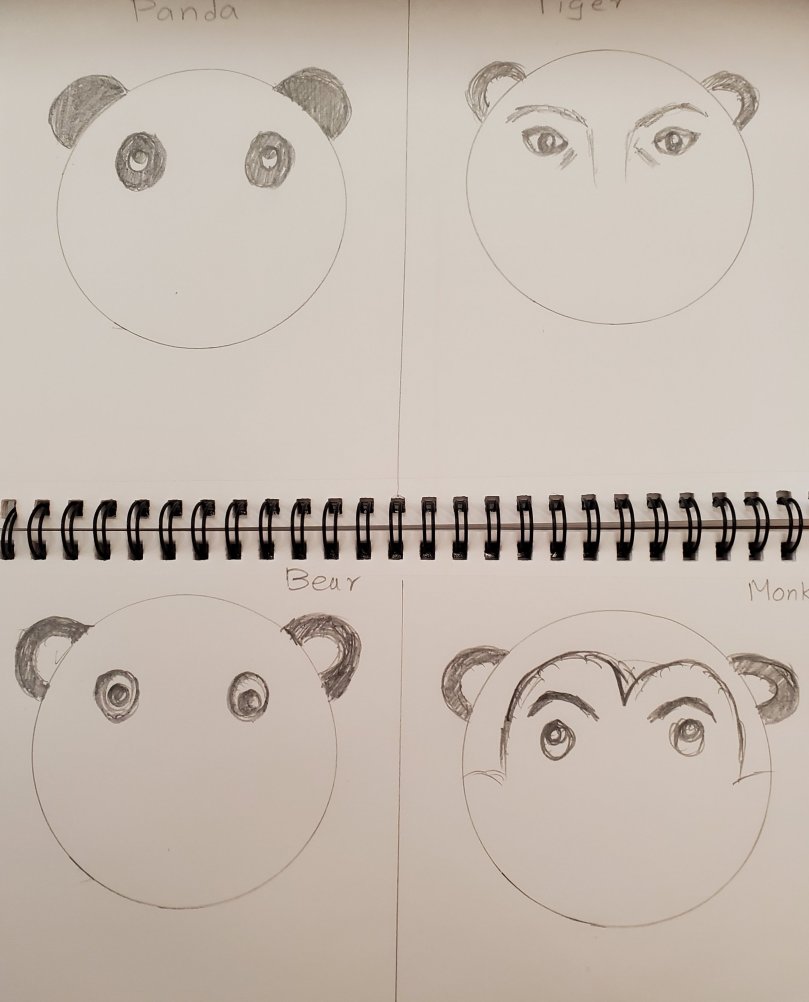
STEP 4: Draw the nose
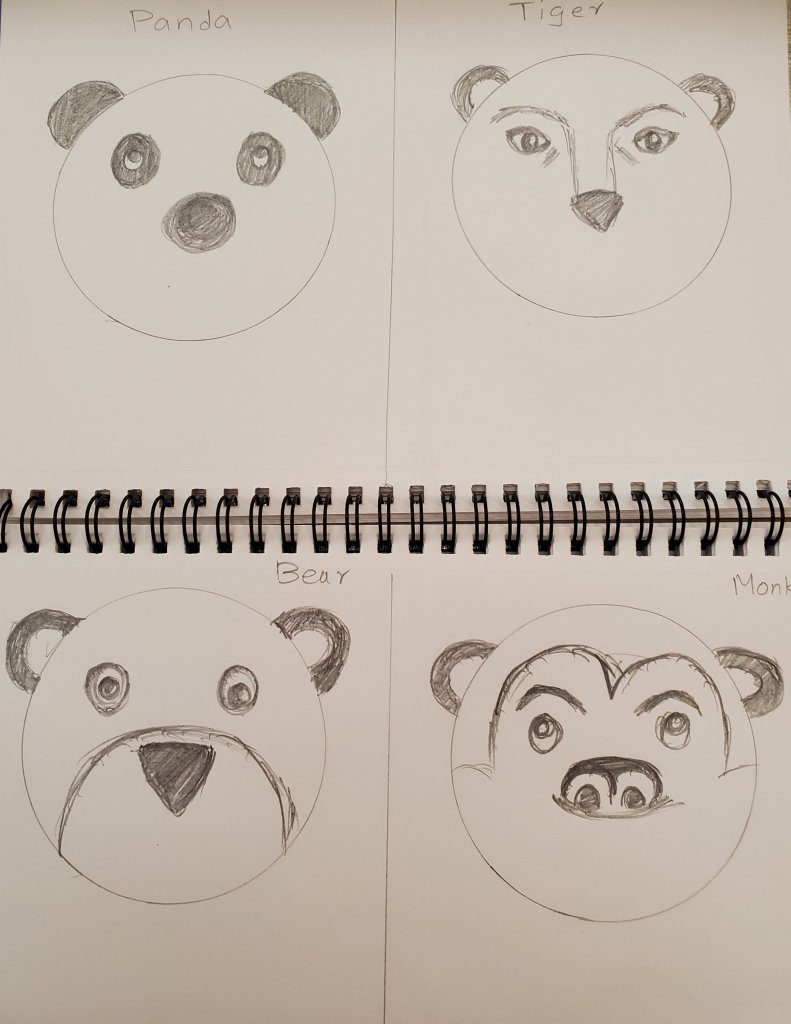
STEP 5: Draw the mouth.
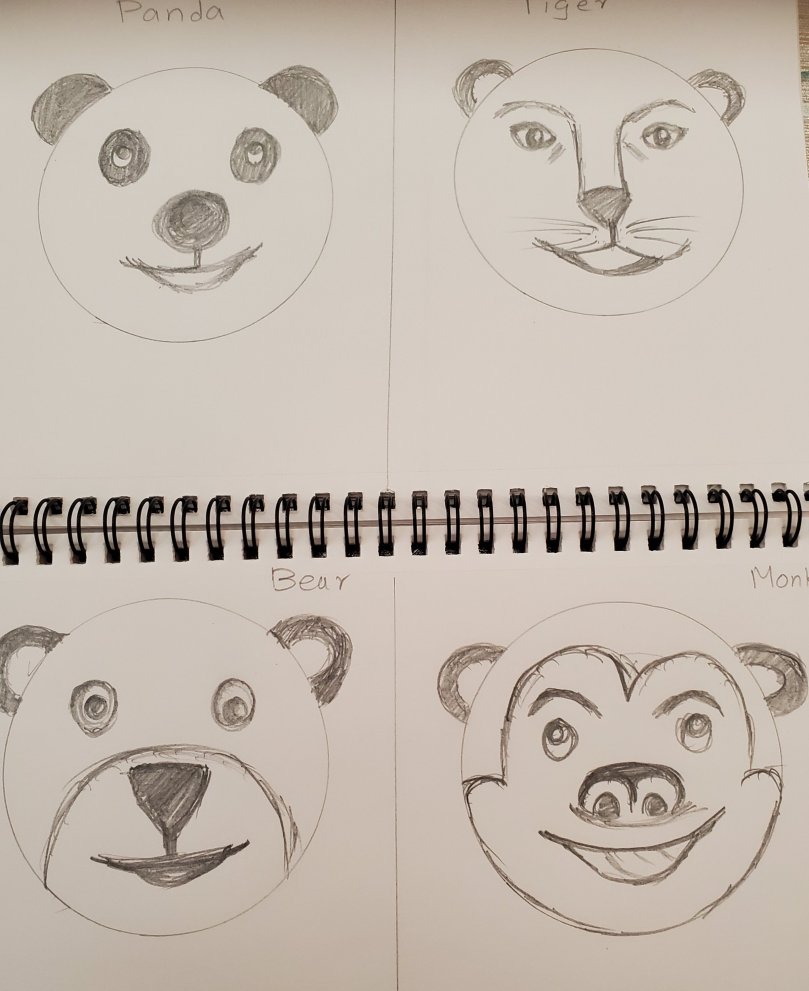
STEP 6: Add some fur and hair!
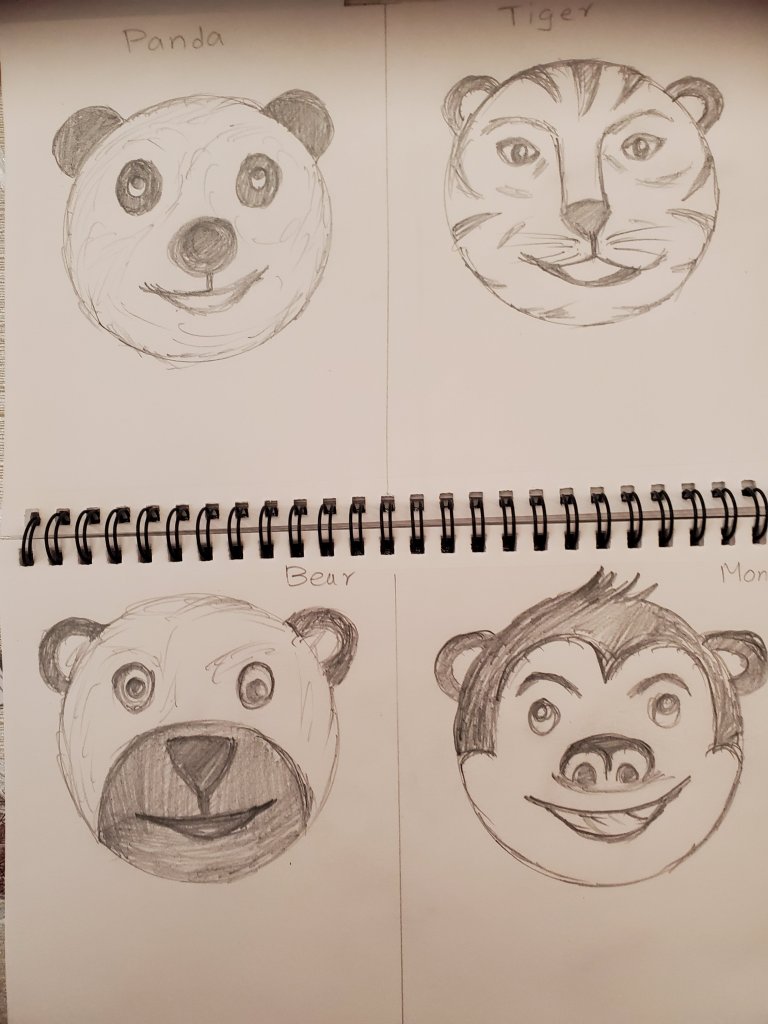
STEP 7: Draw the body and add the details to finish your drawing!!
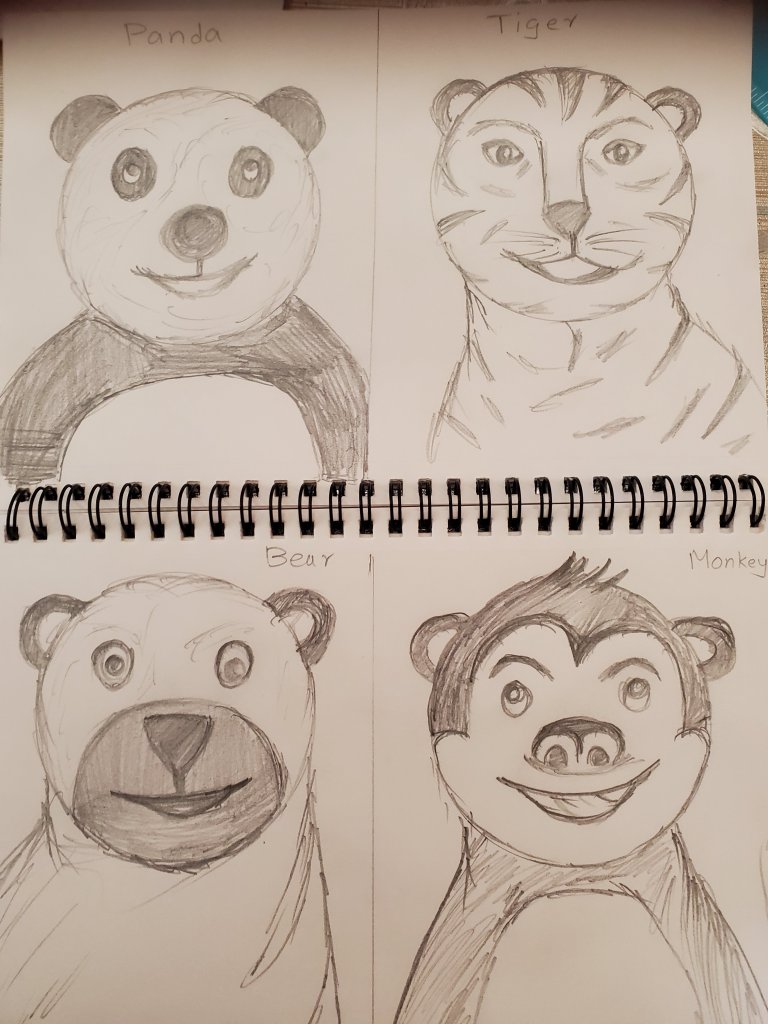
The next 4 animals that we are going to draw are a LION, a PENGUIN, a GIRAFFE and an ELEPHANT.
STEP1: Make the outline shape of the animal faces.
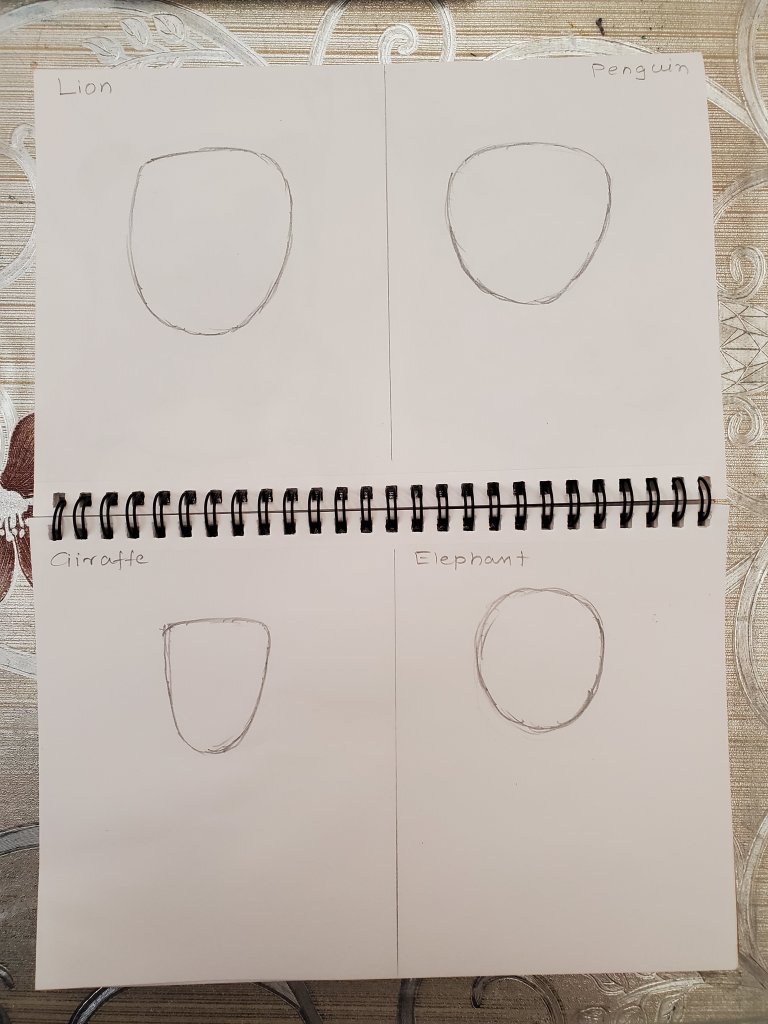
STEP 2: Add the ears.
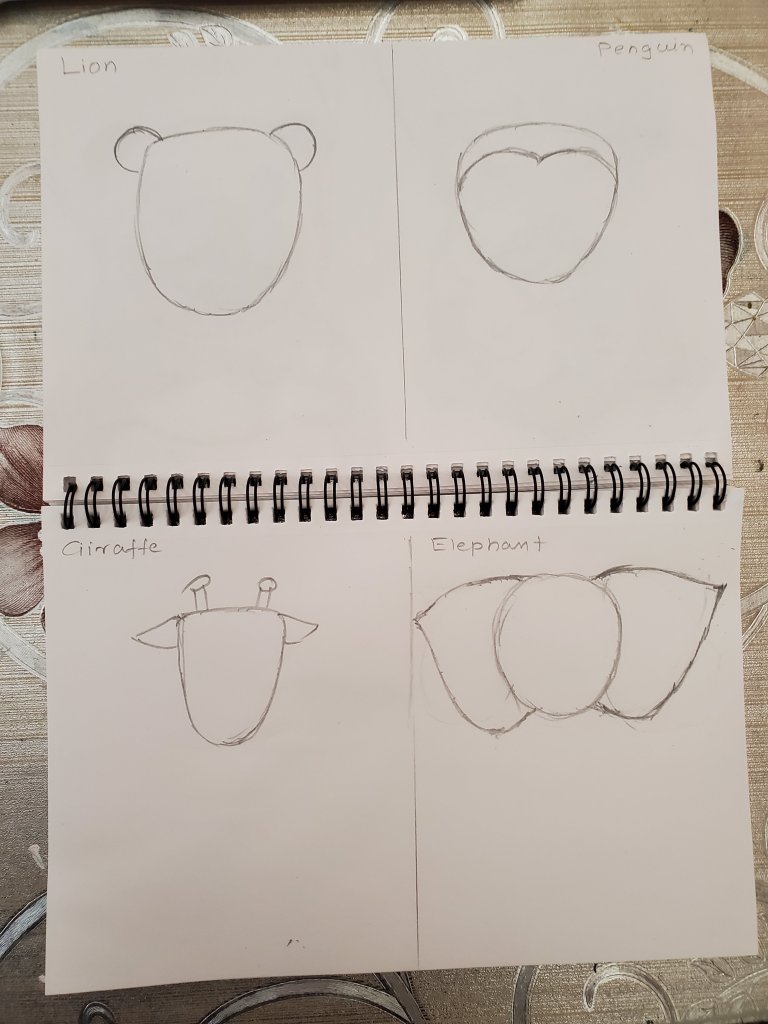
STEP 3: Add your eyes.
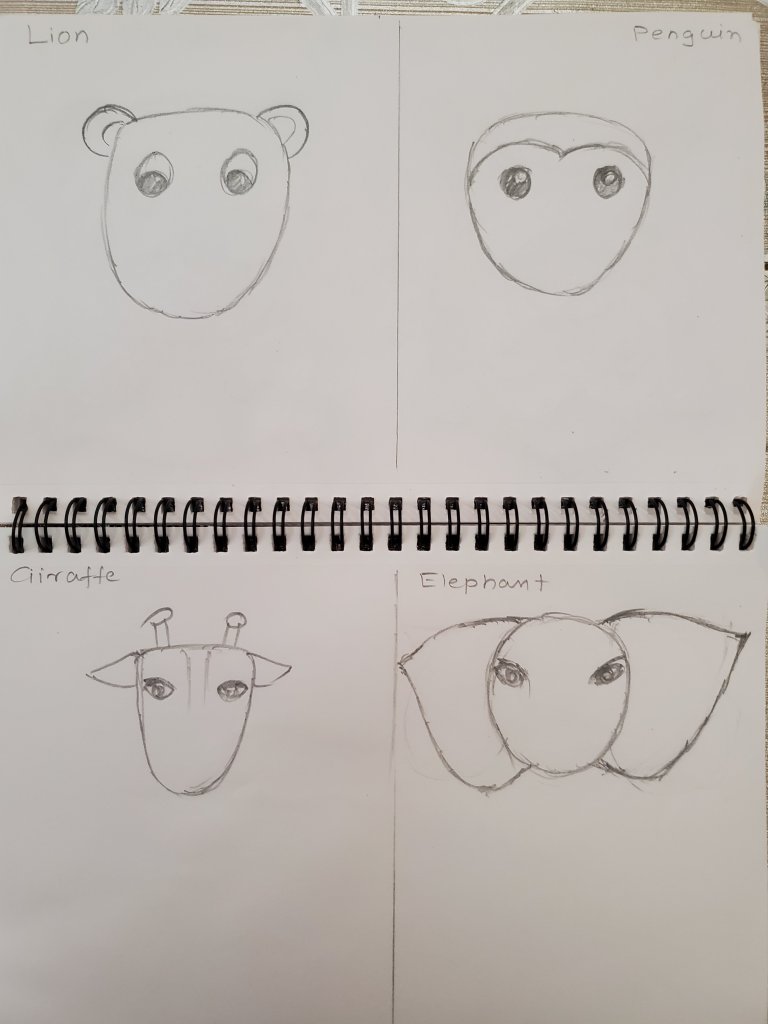
STEP 4: Add the nose/beak.
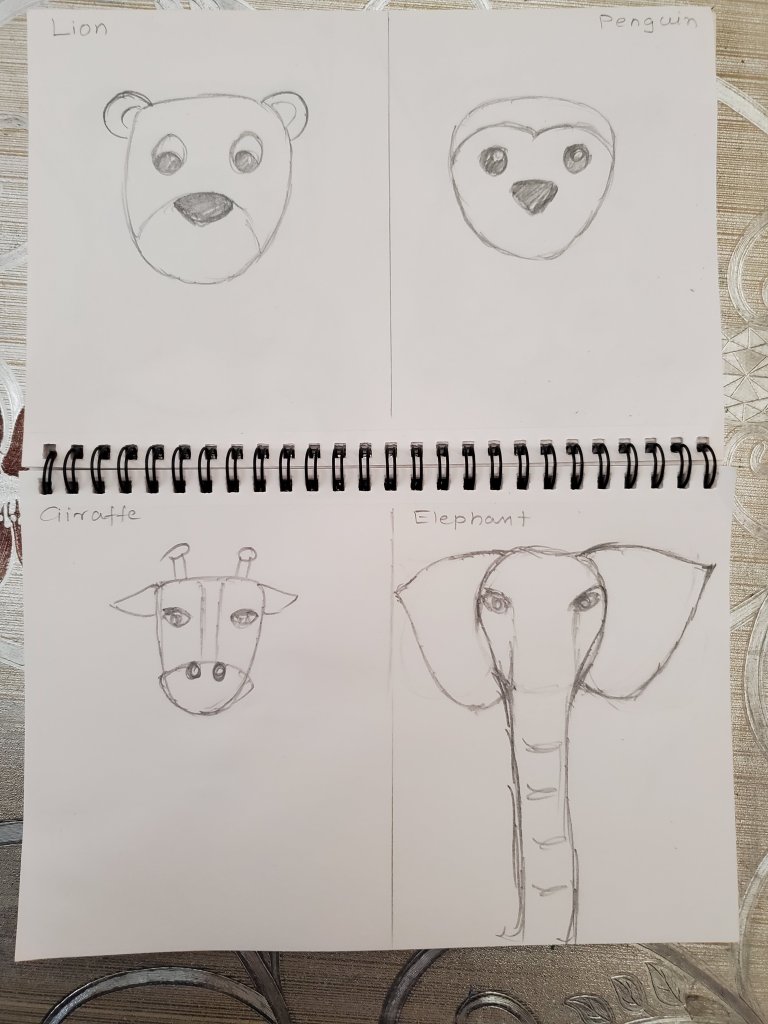
STEP 5: Add the mouth.
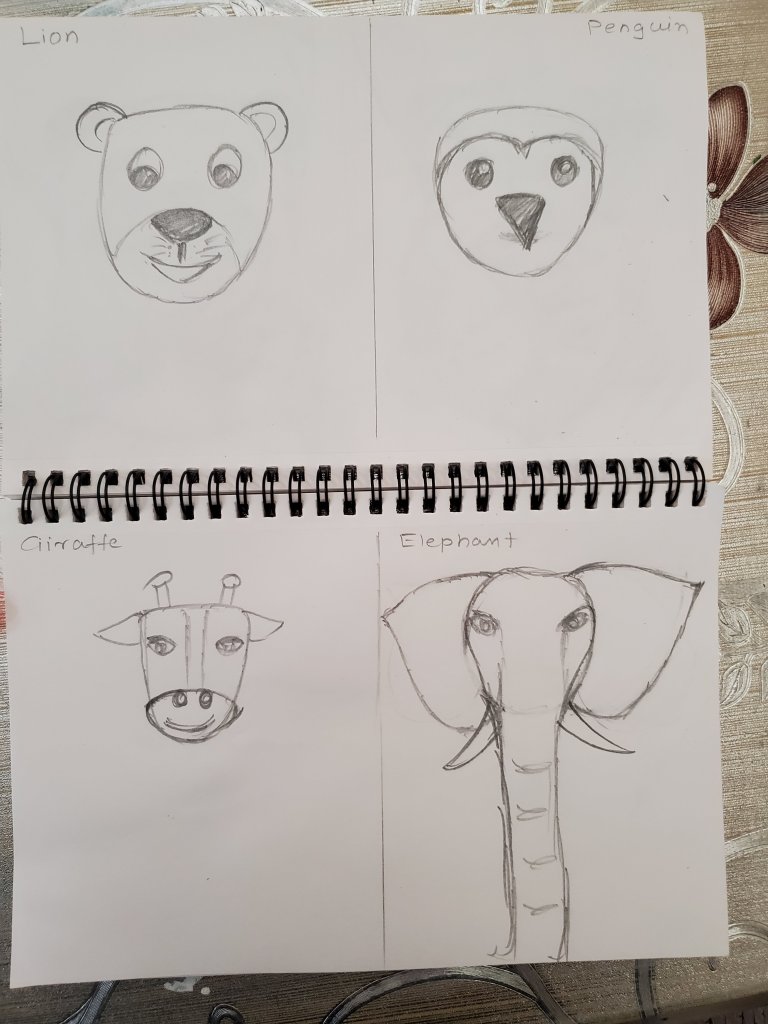
STEP 6: Add the body and details to finish your drawing!!
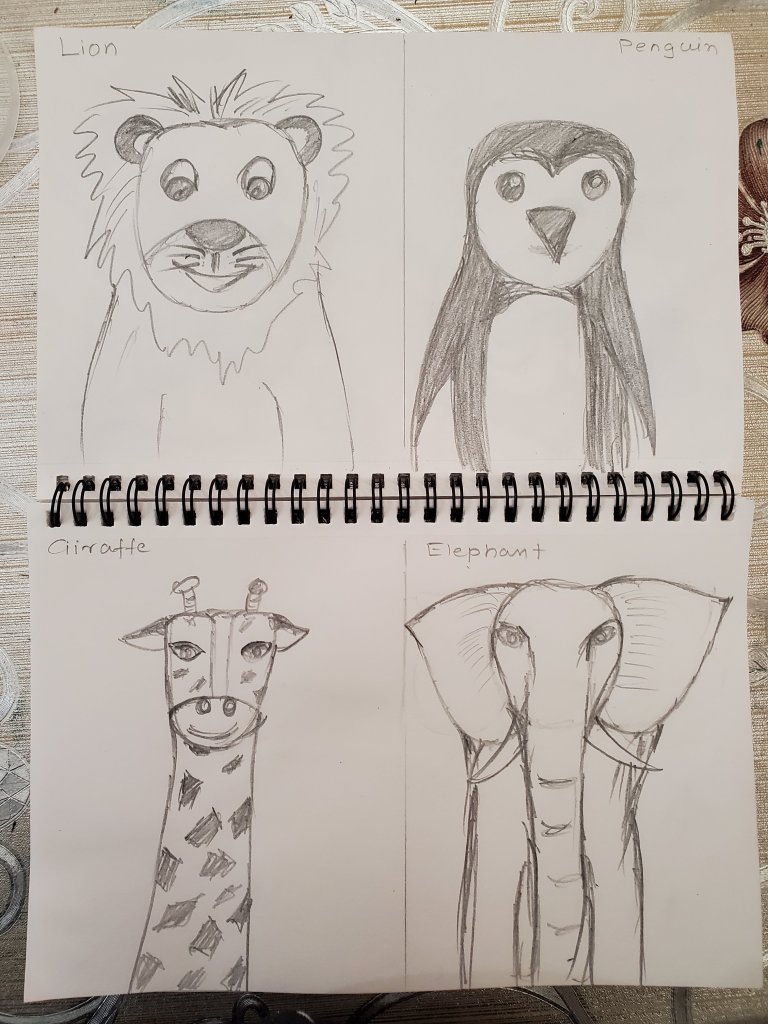
And just like that we made 8 animal portraits!If you like colored versions, go ahead and add some colors!!
You can try the same lesson with favorite pets too!!

